by Stuart Pointon, Lemac Business Development Manager, Brisbane.
While new, large sensor digital cameras offer a range of creative possibilities for cinematographers, many have also encountered a potential pitfall that exists in all of these systems, and care is needed when dealing with this issue. We are talking about pollution of your image by Infra-Red and Far Red light.
IR and Far Red pollution is represented in muddy red colouring of certain materials in the shot when using heavy ND’s. So, why after all of these years shooting film and video are we getting these problems? Firstly, let’s look at the light spectrum shown in Figure 1 to get some idea of where things stand in the way of colour and wavelength. The ‘Far Red’ comes in at around 680nm and continues to just after 700nm. Infrared starts at around 700nm according to the CIE specification (it can be different for various standards bodies).
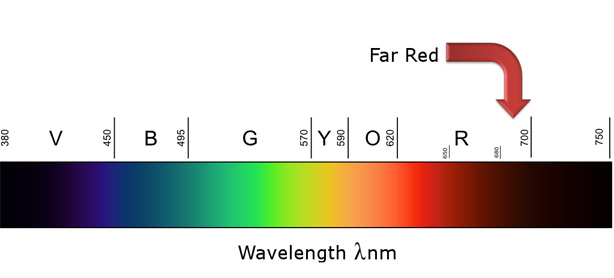
Figure 1: Colour Spectrum
Figure 2 is the diagram for the CIE1931 Standard Observer function. This is an average of human colour spectral response and can vary from person to person. You will note that the average human spectral response goes to 700nm and so we see any colour from 680nm to 700nm
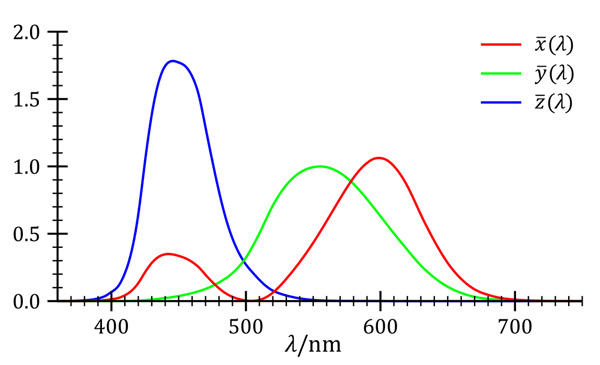
Figure 2: CIE1931 Standard Observer
The CCD’s used in cameras have a strong response into the infrared part of the spectrum. These traditional video cameras had filters which cut the spectrum at around 680nm. By doing this then any spectral information above 680nm was not a problem and the ND’s that were produced by the various manufacturers only had to cover the spectrum up to around 680nm. This is true for film as well; figure 3 shows the spectral response for Kodak 500T film. You can see that the response of the film is below 700nm.
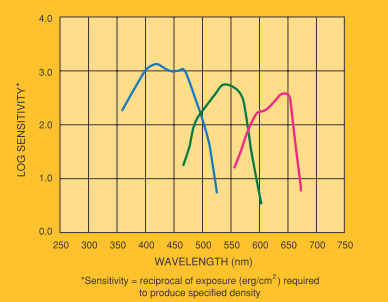
Figure 3: Kodak 500t Spectral Response
With the advent of the large sensor cameras trying to emulate or outperform film, the designers have removed the filter from the far red part of the spectrum and mainly only left the filter in at the infrared part of the spectrum, usually above 700nm. This has the effect of increasing the colour gamut in the red spectrum which influences flesh tones and allows for deep reds to be captured. The issue of far red and infrared pollution comes about by the use of the ND’s designed for the older video cameras or film cameras. When the heavy ND’s are used then the 400nm to 680nm spectral is reduced but the 680nm+ is left unchanged. This is shown in Figure 4 below.
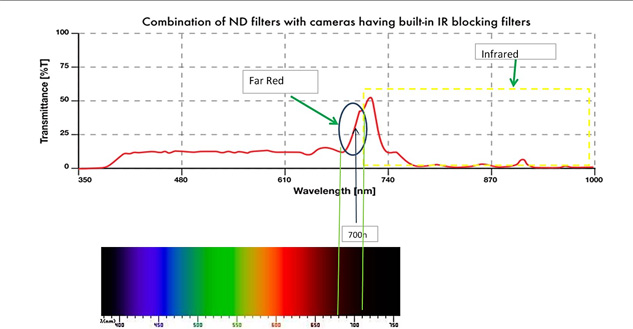
Figure 4: Standard ND Filter Response
The Solution to the Pollution
The new filters from companies such as Tiffen and Schneider have been designed to account for the larger spectral band than the standard ND filters. Figure 5 below shows the difference between the
standard ND and the new Tiffen T1 IR ND. The Tiffen T1 works well across the entire spectrum to eliminate far red and infrared pollution. The figure 6 below shows the effect of far red pollution on an ARRI Alexa when using a standard 1.2ND.
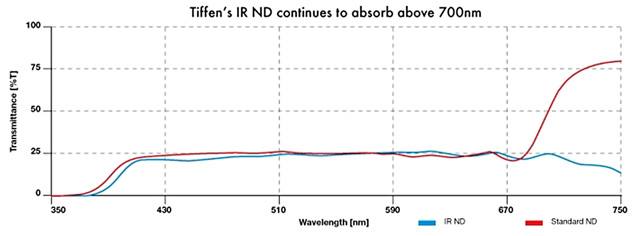
Figure 5: Tiffen IR ND Response
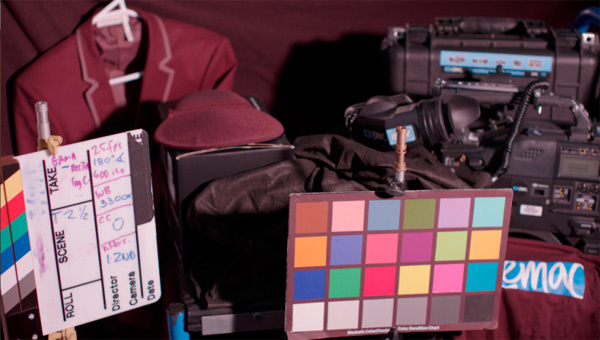
Figure 6: Alexa with 1.2ND
Figure 7 shows the same image when using the Tiffen T1 IRND with the standard ND1.2. The Tiffen T1 did exhibit a green colour shift.
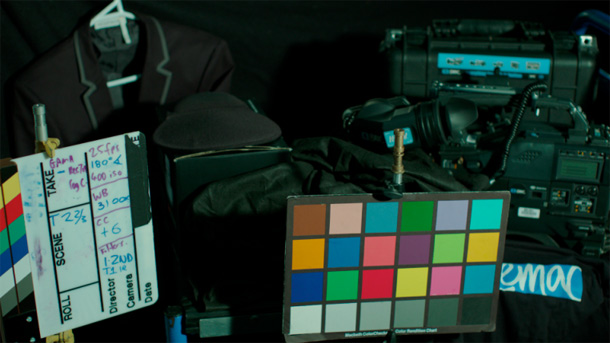
Figure 7: Alexa with ND1.2 and Tiffen T1 IRND
The Schneider Platinum IRND’s are a new filter that incorporates the entire spectrum. Figure 8 below shows the difference between the standard ND and the new Platinum IRND’s.
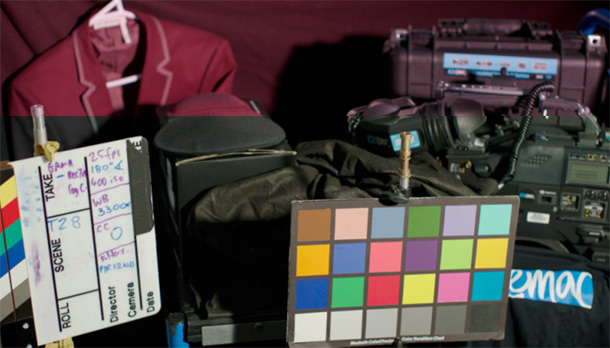
Figure 8: Standard ND top of image vs Platinum IRND bottom of image
Summary
The use of the current large sensor cameras require the right filters to be used when ND’s are required. In the case of stacking ND’s then testing needs to be done to verify the level of colour shift. We found that the T1 gave a slight green shift and this combined with the standard ND the resulting image was fairly neutral. The Schneider Platinum worked very well and there was little colour shift.
If you don’t use the correct filters then correcting far red – infrared pollution means additional time and cost in post using vfx to correct, it is not a simple grade correction.